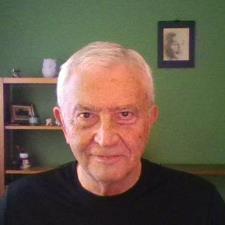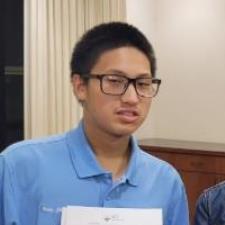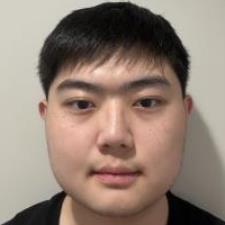25,979 Answered Questions for the topic chemistry
Chemistry
07/31/25
How is temperature, speed, rms speed, average speed, and kinetic energy related? Also, do collisions conserve total speed the way the conserve total kinetic energy?
I've been looking at distributions of molecular speeds and all these terms have been confusing me. Speed and kinetic energy confuse me especially; how does temperature influence them? Any response...
more
Chemistry
07/28/25
How to identify the limiting reactant?
I'm studying chemical reactions involving multiple reactants, and I'm having trouble determining the limiting reactant. For example, if there's a mixture of H₂SO₄ and NaOH reacting together in an...
more
Chemistry
07/28/25
Distinguishing Ionic and covalent bonds in complex compounds?
I'm studying different types of chemical bonds and having trouble distinguishing between ionic and covalent bonds, especially in compounds with multiple elements or complex molecular structures....
more
Chemistry
07/25/25
Titration problem
Hello, I am currently studying for the exam I have in a couple days and I was just going through my reviews and came across this titration problem. I could not solve it no matter what, I emailed my...
more
Chemistry
07/23/25
How do you predict products for reactions with acid and base reactants (beyond neutralization reactions), and how do acid base reactions relate to redox reactions?
I'm so sorry--this is such a vague and annoying question. Essentially, as I saw more and more reactions in chemistry, all of the reactions with acids and bases and anhydride acids and bases and...
more
Chemistry
07/22/25
How do you write neutralization reactions backwards (with the reactants as the salt and water)?
For example:NaOCH3 (s) + H2O (l) -->Al4C3 + H2O (l) -->Thank you!!!
Chemistry
07/17/25
Understanding pH Changes
I'm confused about how buffering works in weak acid/base systems. If I add a small amount of strong acid (like HCl) to a buffer made of acetic acid and sodium acetate, why doesn't the pH drop...
more
Chemistry
07/14/25
Why do catalysts speed up reactions without changing the equilibrium?
Chemistry
07/11/25
How does temperature affect the rate of a chemical reaction?
Chemistry
07/11/25
What does the rate law tell us about a chemical reaction, and how is it determined?
Chemistry
07/08/25
Hydrogen Peroxide Gas Decomposition
1. When using 3% hydrogen peroxide (type sold in brown bottle at drugstore) for home cleaning in the bathroom, once applied to tile or other bathroom surface, approximately how long does it take...
more
Chemistry
07/02/25
help word problem
Two solutions of hydrochloric acid, one 10% and one 55%, are in the possession of chemist Theresa Morgan. To make a hydrochloric acid solution with a 50% acid concentration, how many liters of each...
more
Chemistry
07/01/25
At a certain temperature, the following reaction is at equilibrium: N2 ( 𝑔 ) + 3 H2 ( 𝑔 ) ⇌ 2 NH3 ( 𝑔 ) + heat Predict the direction the equilibrium will shift in response to each change.
a) Predict the direction the equilibrium will shift in response to each of the following changes. Explain your reasoning using Le Châtelier’s Principle.
Additional H₂ gas is added to the...
more
Chemistry
07/01/25
A 10.0 g sample of calcium carbonate (CaCO₃) is heated strongly and decomposes according to the reaction: CaCO3 ( 𝑠 ) → CaO ( 𝑠 ) + CO2 ( 𝑔 ) , what is the theoretical yield of CO2 (in grams)?
a) What is the theoretical yield of CO₂ (in grams)?b) If only 3.21 g of CO₂ is collected, what is the percent yield?c) Explain the role of limiting reactants in this type of decomposition reaction.
Chemistry
06/28/25
How do I balance chemical equations?
Chemistry Chemical Engineering
06/20/25
Potentiometric Titration
Generate a titration curve for the titration of 50mL methyl amine (0.02M) with hydrochloric acid (0.02). All calculations with 5mL increment for pre and post equivalence and 0.2 mL increment at 5ml...
more
Chemistry
06/12/25
Cannot see the messages to/from the tutor
HiI'm having issues with the "messages" tab - nothing is loading when i click the tab and I know that there are previous messages between me and the tutor
Chemistry Chemical Engineering
06/06/25
Multiple Unit Balance
Potassium dichromate (K2Cr2O7) is to be recovered from 25 wt % aqueous solution. The solution is joined by a recycle stream and fed to a crystallizer/centrifuge where enough water is removed so...
more
Chemistry
06/03/25
PAYMENT OPTION ADDITION / REMOVAL
I have added Paypal as my new payment option and want to remove my primary Mastercard from payment option, which I cannot.
Chemistry Chemical Engineering
05/29/25
Chemical Equilibrium Complex
Calculate the Ka1, Ka2, and Ka3 of Ca3(PO4)2 with a pH of 8.00
05/23/25
New to Wyzant Tutoring - Looking for new clients!
I have long been a proponent of a connection-driven tutoring approach—one that supports students not only academically, but also socially and emotionally. Over my years working as a peer tutor,...
more
Chemistry
05/16/25
E °cell combing half reactions
Use the following half-reactions to write three spontaneous reactions. Calculate E °cell for each reaction, and rank the strengths of the oxidizing and reducing agents. (1) Al3+(aq) + 3e- → Al (s) ...
more
Chemistry
04/17/25
Determine the pressure change when a constant volume of gas at 1.00 atm is heated from 19.3°C to 60.0°C.
Determine the pressure change when a constant volume of gas at 1.00 atm is heated from 19.3°C to 60.0°C.
Still looking for help? Get the right answer, fast.
Ask a question for free
Get a free answer to a quick problem.
Most questions answered within 4 hours.
OR
Find an Online Tutor Now
Choose an expert and meet online. No packages or subscriptions, pay only for the time you need.




























